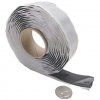- Sep 29, 2014
- 282
- 30
I just fried my Dahua SD59225U-HNI ($500) when the tornadoes came through the Dallas area, water got into the junction box. I thought it was sufficiently sealed, and I had wrapped the connection with electrical tape. Had I not tightened the cable gland, the water would have drained out.
How should I have installed this? I had gaskets on the back of the box, and between the box and the camera stem. Maybe needed to silicone around the box inlet hole.
Also, Andy does not have spare parts for it. Does anyone else have a source for spare parts? I assume I have to replace the entire POE module.
Thanks for your feedback...
How should I have installed this? I had gaskets on the back of the box, and between the box and the camera stem. Maybe needed to silicone around the box inlet hole.
Also, Andy does not have spare parts for it. Does anyone else have a source for spare parts? I assume I have to replace the entire POE module.
Thanks for your feedback...




